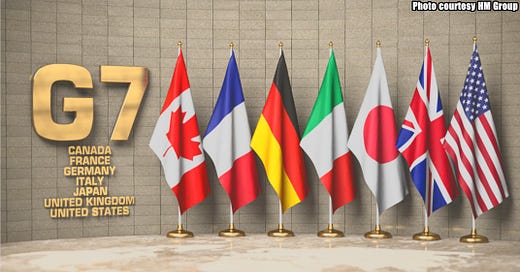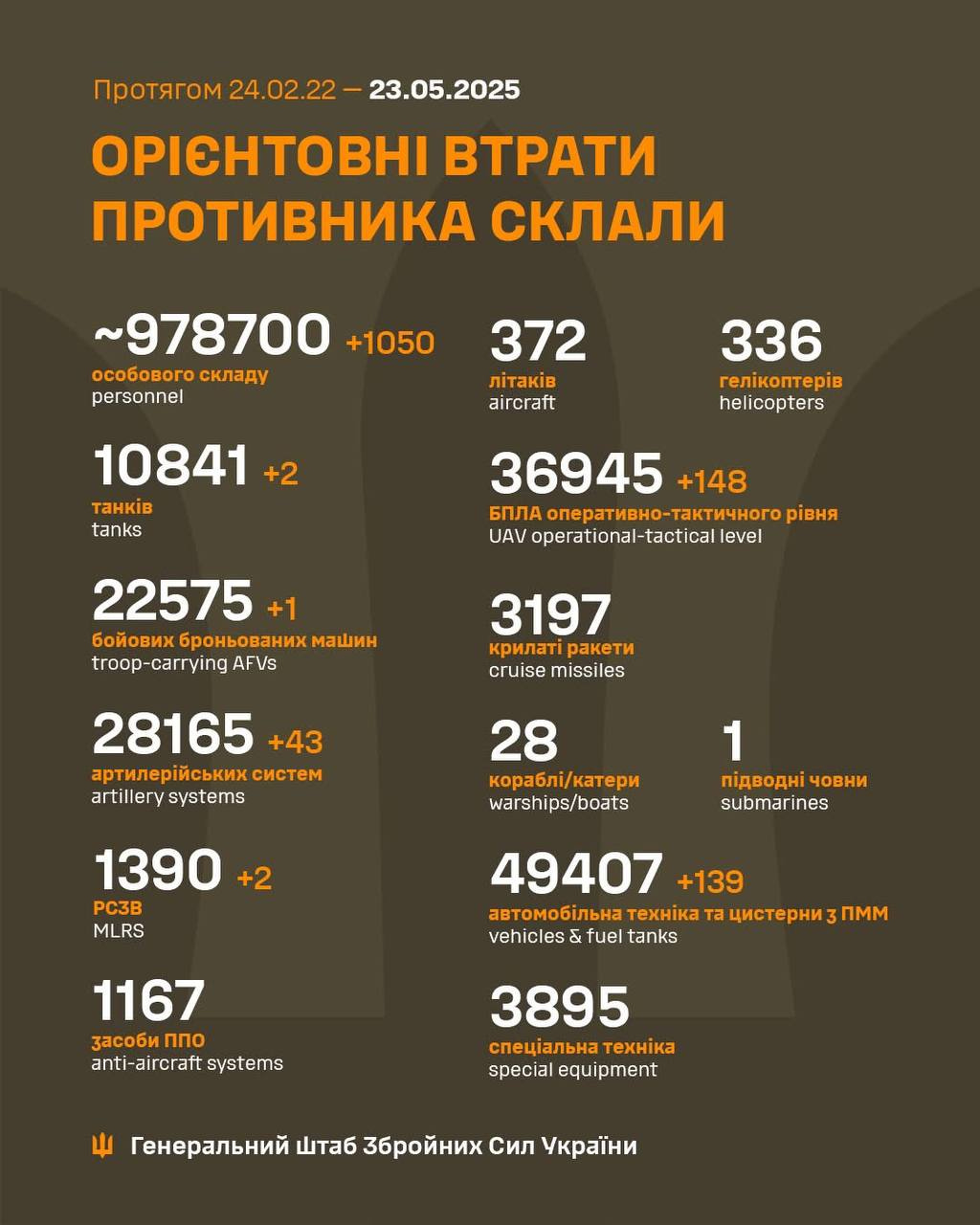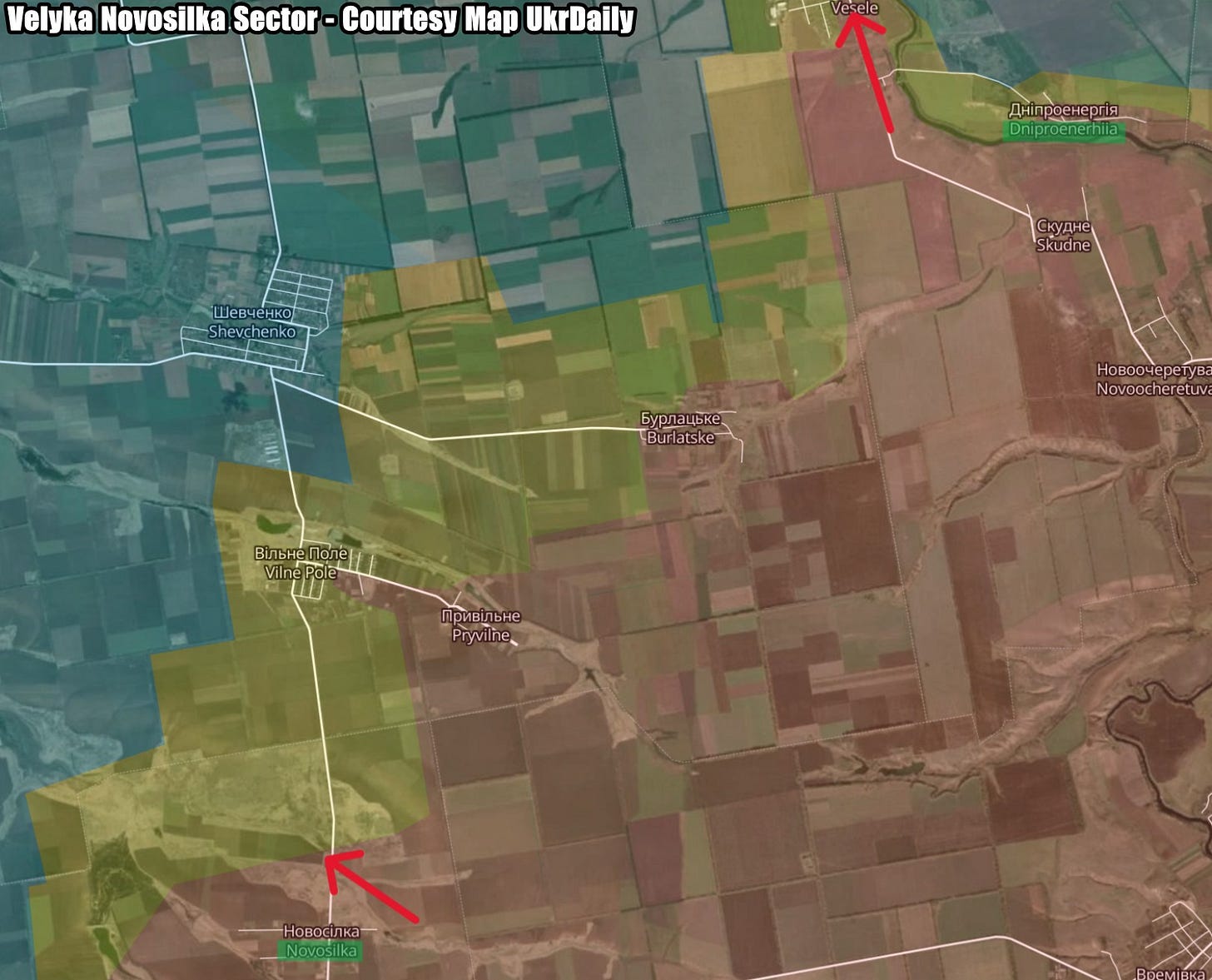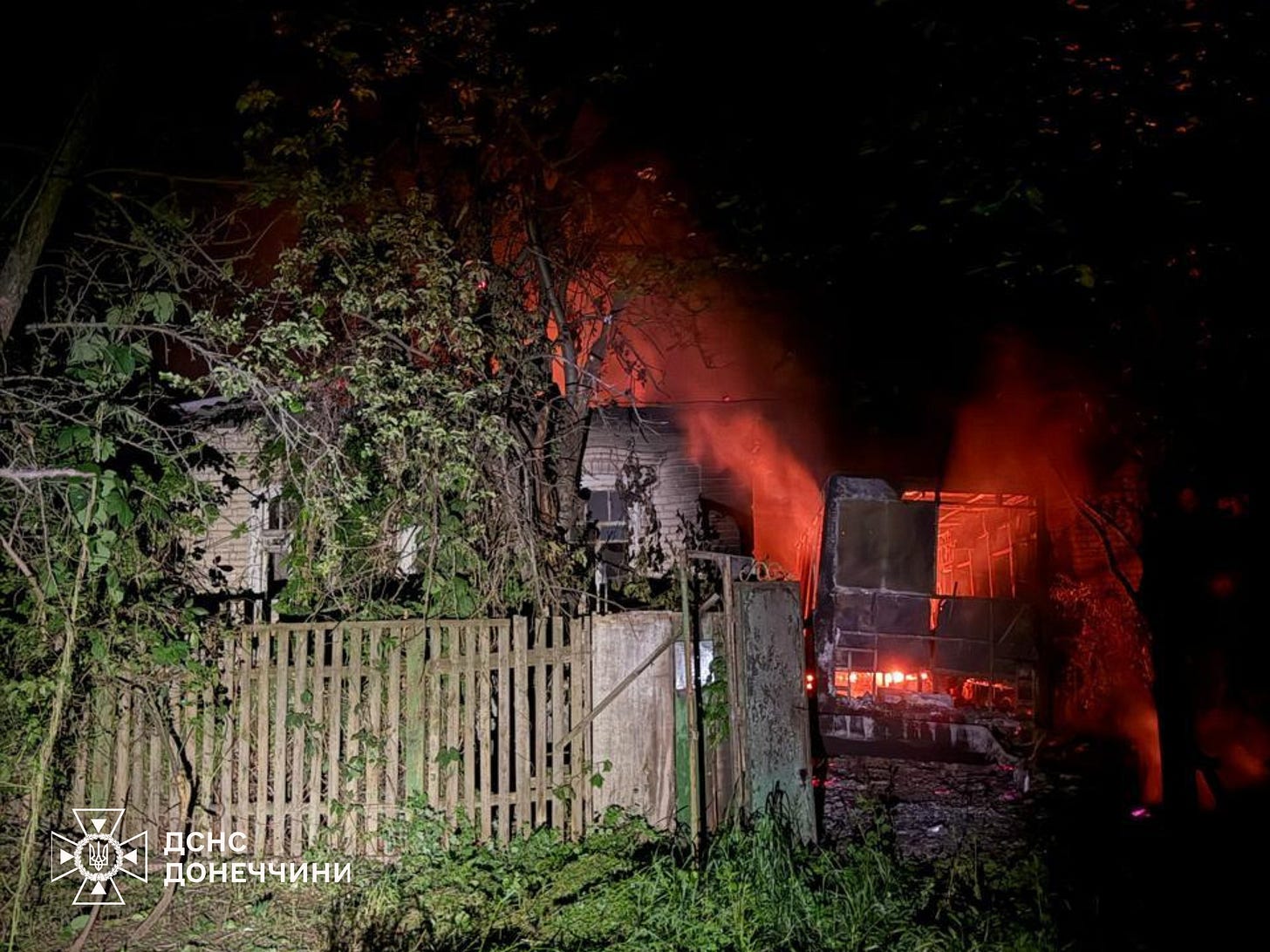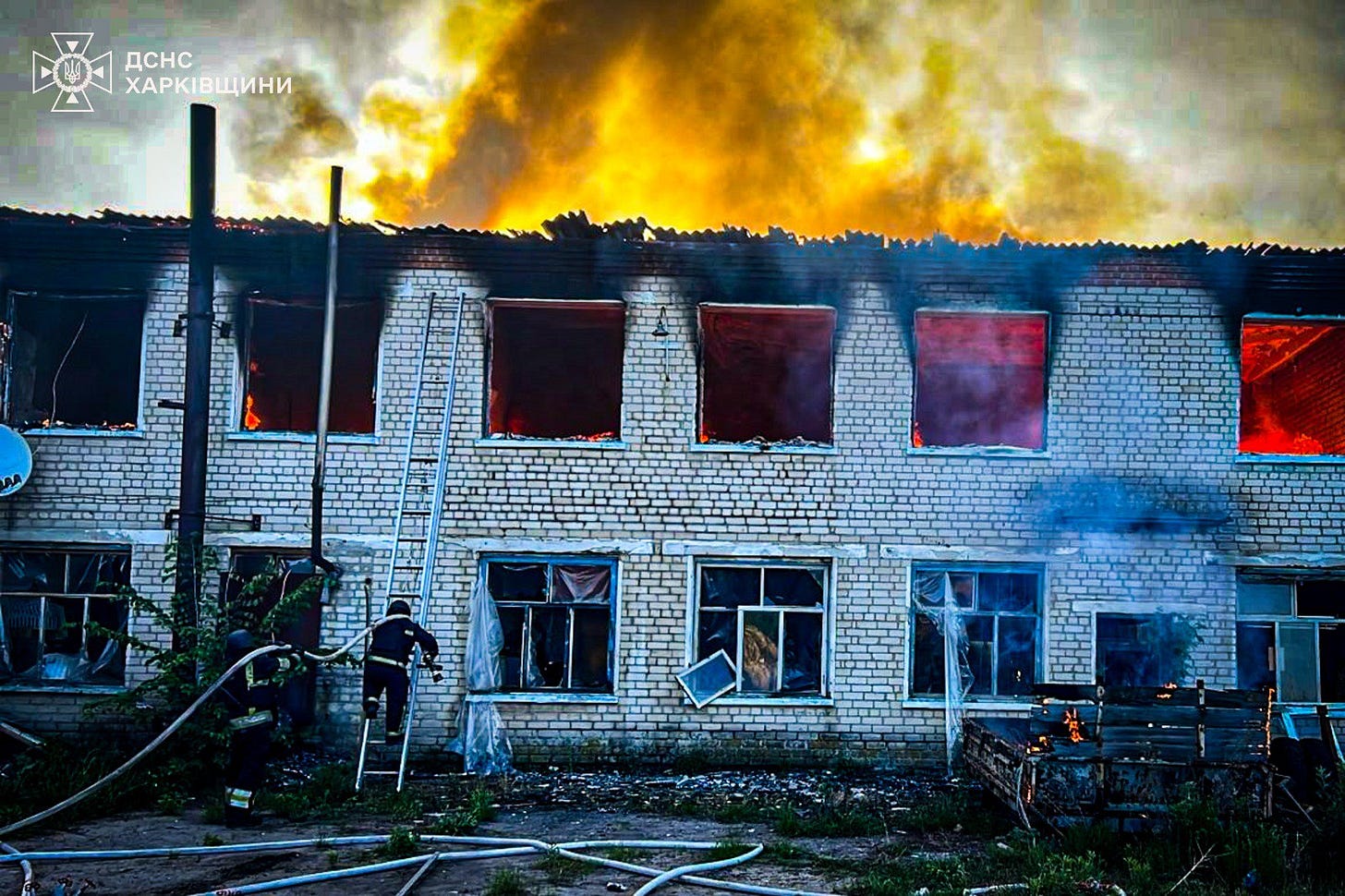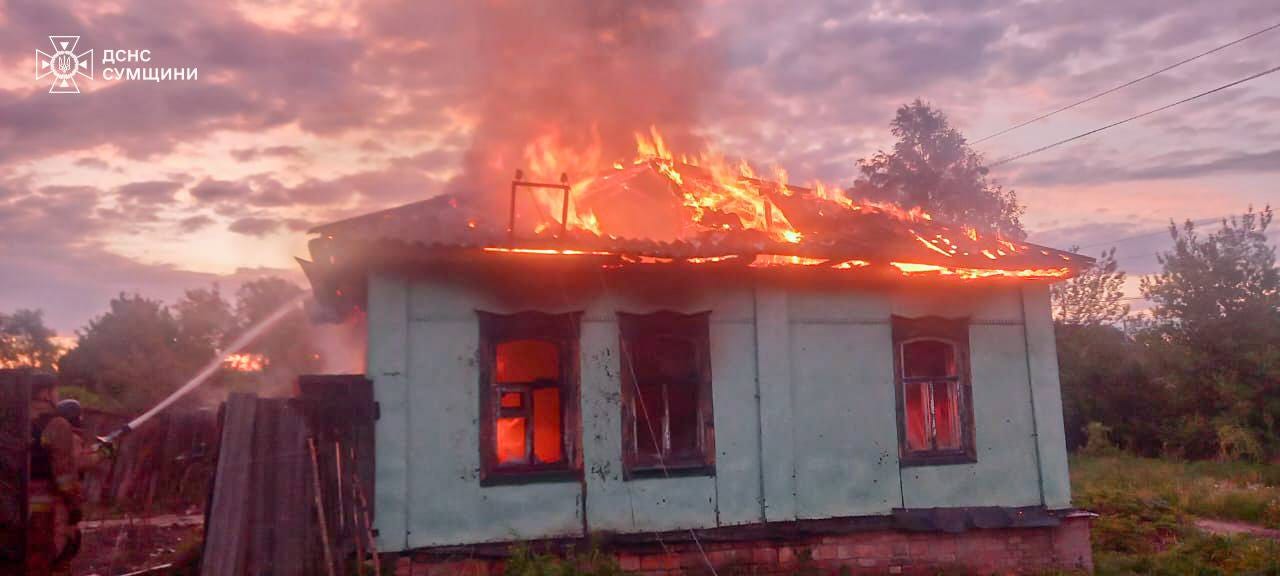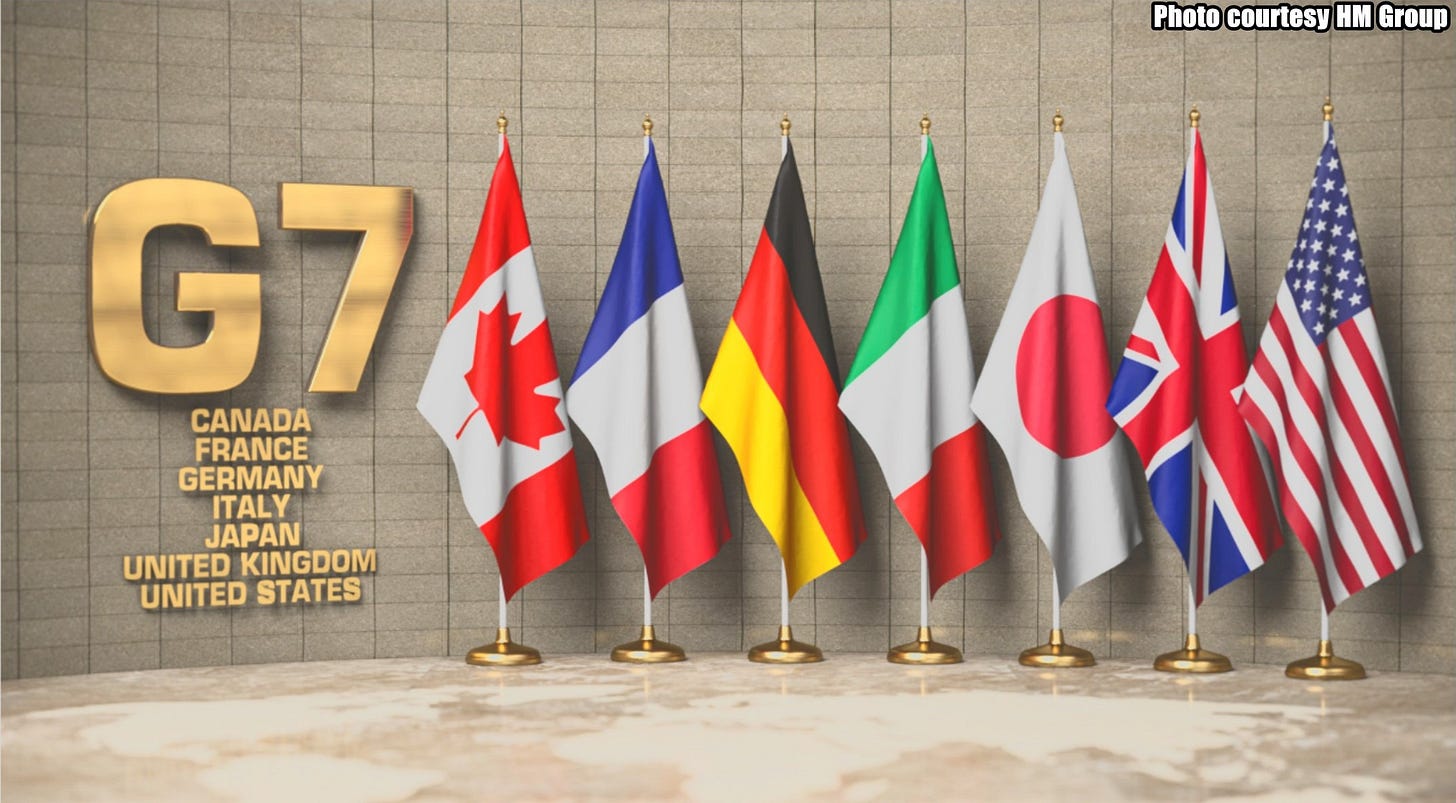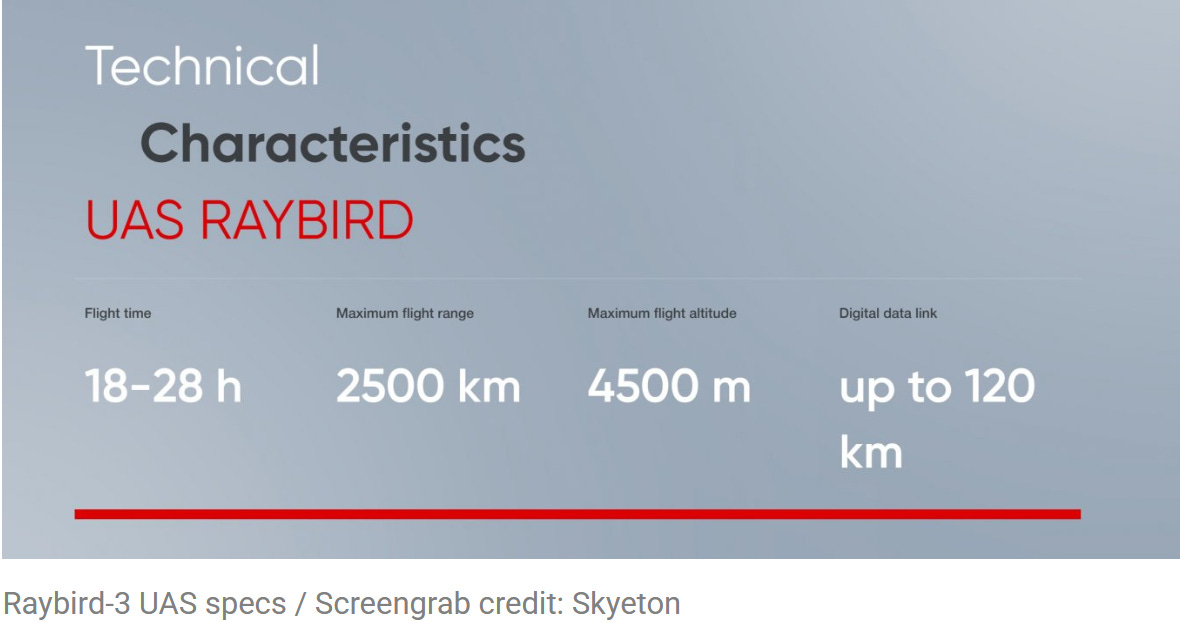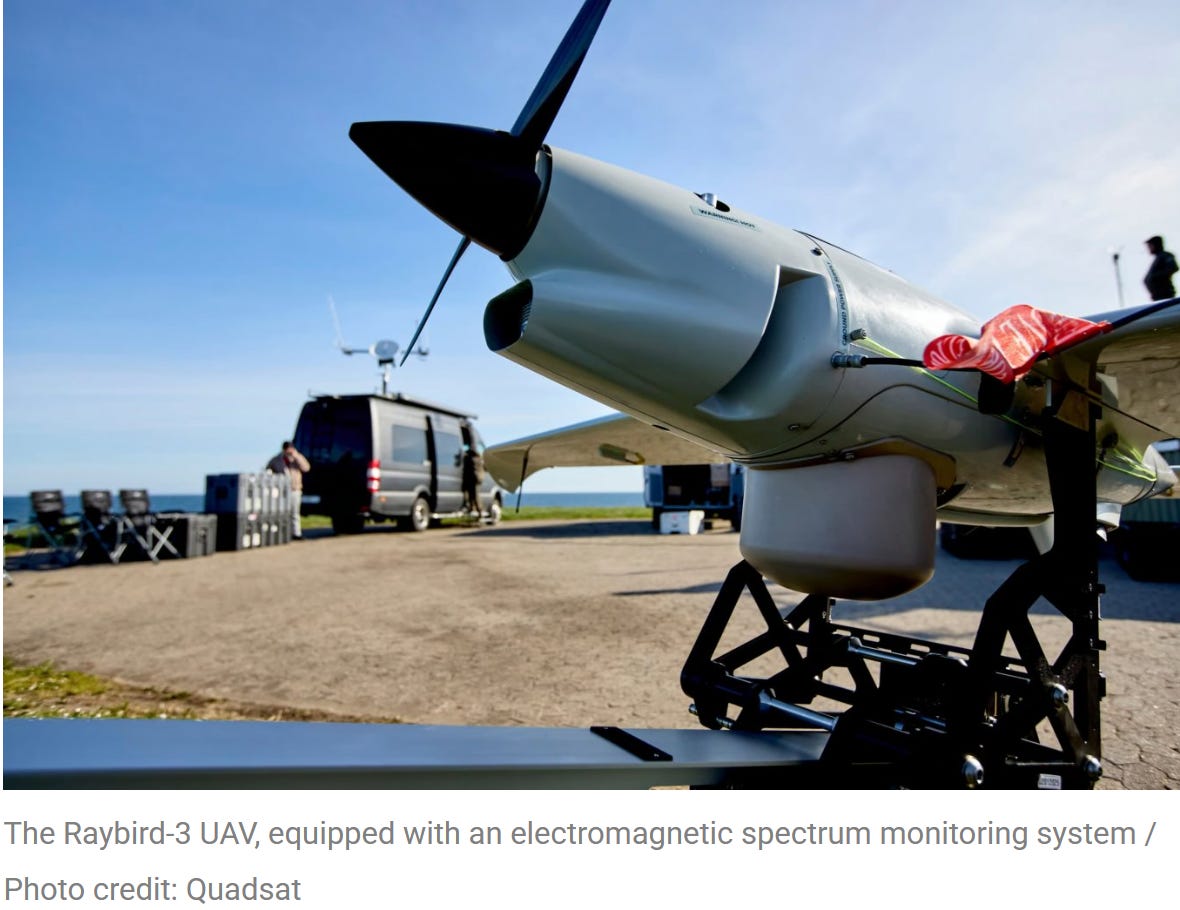Slava Ukraini! In early 2022 I began a Telegram channel aggregating news from a number of sources daily on the war in Ukraine. In June 2023 I began providing a daily draft for the Ukraine War Brief Podcast collecting news from over 70 sources daily, which formed the basis of the script. While the Podcast no longer exists I have continued to make this Brief available for my followers here on Substack for those who wish to keep up with the news from the war.
If you find the Brief informative I would appreciate it if you shared it with others.
All the latest news on the Russo-Ukraine War 6 days per week
ALONG THE CONTACT LINE
GSAFU Morning Report
For: May 23, 2025
The General Staff of the Armed Forces of Ukraine in its Operational Information update at 08:00 on May 23 stated that day 1185 of the full-scale invasion of the Russian Federation against Ukraine had begun.
The situation on the line of combat remains tense in some sectors. Ukrainian defenders continue to actively counteract the Russian aggressor, causing them significant losses in personnel, equipment and technology. Exhausting the enemy along the entire front line and continuing to disrupt the plans of Russian occupiers to advance deeper into the territory of Ukraine.
During the past day, 141 combat engagements took place.
Over the past 24 hours, the enemy carried out 2 missile strikes, 56 air strikes, used 3,000 attack drones and fired approximately 5,900 artillery shells across the positions of Ukrainian forces and civilians.
Air Force Daily Report
150 ENEMY UAVS DESTROYED
➖➖➖➖➖➖➖➖➖
On the night of May 23 (from 22:30 on May 22), the enemy attacked with an Iskander-M ballistic missile from the Rostov region - Russia and 175 Shahed attack UAVs and simulator drones of various types from the directions: Millerovo, Kursk, Primorsko-Akhtarsk - Russia.
The air attack was repelled by aviation, anti-aircraft missile troops, electronic warfare and unmanned systems units, and mobile fire groups of the Defense Forces of Ukraine.
As of 13:00, air defenses have neutralized 150 enemy Shahed UAVs (and other types of UAVs) in the east, west, north, south, and center of the country. 91 were shot down by fire weapons, 59 were lost/suppressed by electronic warfare (EW) (without negative consequences).
As a result of the enemy attack, the Sumy, Dnipropetrovsk, Donetsk, Kharkiv, Kyiv, Zhytomyr, Odesa, Chernivtsi, and Ivano-Frankivsk regions suffered.
Combat Operations in the Russian Federation
There have been no major changes to the combat environment since our last report.
The Khortytsia operational-strategic group
(Responsible for the northeastern part of Ukraine. )
Kharkiv Sector: Russian forces recently advanced northeast of Kharkiv City.
Geolocated footage published on May 21 indicates that Russian forces recently advanced in northeastern Vovchansk (northeast of Kharkiv City).
Kostyantynivka Sector: Ukrainian forces recently advanced in the Chasiv Yar direction.
Geolocated footage published on May 16 shows artillery elements of the Russian 7th Military Base (49th CAA, SMD) striking Ukrainian positions in southeastern Bila Hora (south of Chasiv Yar), indicating that Ukrainian forces advanced in the area. ISW assesses that this Ukrainian advance did not occur recently.
Ukrainian and Russian forces recently advanced in the Toretsk direction.
Geolocated footage published on May 21 indicates that Ukrainian forces recently advanced northwest of Druzhba (east of Toretsk).[55]
Geolocated footage published on May 21 and 22 indicates that Russian forces recently advanced west of Dyliivka (north of Toretsk) and southwest of Novopaske (west of Toretsk).
The Tavria operational-strategic group
(Responsible for the central-eastern and southeastern part of Ukraine.)
Velyka Novosilka Sector: Russian forces recently advanced in the Velyka Novosilka direction.
Geolocated footage published on May 22 indicates that Russian forces recently advanced north of Dniproenerhiya (northwest of Velyka Novosilka) and northwest of Novosilka (west of Velyka Novosilka).
The Odesa operational-strategic group
(Responsible for Kherson, Qırım, (also known as Crimea) and the Black Sea.)
There have been no major changes to the combat environment since our last report.
TEMPORARILY OCCUPIED TERRITORIES
Nothing major to report.
THE HOME FRONT
Russian attacks against Ukraine kill 7, injure 20 over the past day.
Russian attacks against Ukraine killed seven people and injured 20 others over the past day, the Kyiv Independent reported citing regional authorities on May 23.
A Russian mass drone strike in Poltava Oblast destroyed the building of a business enterprise near Kremenchuk, injuring one person, Governor Volodymyr Kohut said. The attack also damaged power lines, leaving around 2,000 customers without power.
Two people were injured as a result of the Russian drone attack in Odesa Oblast, Governor Oleh Kiper reported.
Three people were killed in Kostiantynivka, Pokrovsk and Raihorodok in Donetsk Oblast, Governor Vadym Filashkin said. Four more people were injured in the region over the past day.
A Russian guided bomb attack on Kupiansk in Kharkiv Oblast injured two 60-year-old employees of a local utility company, Governor Oleh Syniehubov said. One of the men later died in hospital from injuries.
Another 66-year-old man suffered injuries in the village of Pechenihy, Syniehubov said.
Two men and a woman were injured near Vasylivka and Polohy in Zaporizhzhia Oblast, according to Governor Ivan Fedorov. Russian shelling of an agricultural enterprise near Huliaipole also injured a woman and a man, aged 52 and 63, on the morning of May 23.
In Kherson Oblast, Russian forces targeted 43 settlements, including the regional center of Kherson. Three people were killed, and six others were injured, Governor Oleksandr Prokudin reported.
RUSSIAN WORLD
Russia tries to claim the dissolution of the Soviet Union was illegal.
The Institute for the Study of War (ISW), a US based think tank, in its May 22 Russian Offensive Campaign Assessment reported that Russian authorities are renewing their years-long narrative rejecting the legality of the dissolution of the Soviet Union in 1991, possibly to deny Ukrainian and Belarusian sovereignty and independence in the future.
Russian State Duma Committee on the Protection of the Family, Fatherhood, Motherhood, and Childhood Head and member of the Communist Party Central Committee Nina Ostanina stated on May 22 that Duma deputies are ready to raise the issue of the alleged illegality of the dissolution of the Soviet Union. Ostanina agreed with Russian Presidential Advisor Anton Kobyakov's May 21 claim that the Soviet Union's founding body was not involved in the dissolution of the Soviet Union and that, therefore, the Soviet Union still legally exists. Ostanina further claimed that the dissolution of the Soviet Union was illegal because "no one gave authority" to then Belarusian Parliament Chairperson Stanislav Shushkevich, then Russian Soviet Federative Socialist Republic President Boris Yeltsin, and then Ukrainian President Leonid Kravchuk to sign the December 1991 Belovezha Accords, the internationally recognized document in which the Soviet republics of Ukraine, Russia, and Belarus agreed to dissolve the Soviet Union.
Russian authorities have intermittently revived false narratives about the illegality of the Soviet Union's dissolution and calls to reestablish the Soviet Union since at least 2014, and promoted this informational effort in 2021 and 2023. The Kremlin has been pursuing its strategic effort to de facto annex Belarus through the framework of the Union State of Russia and Belarus and consistently denies Ukrainian sovereignty.
Russian officials, including Russian President Vladimir Putin and Investigative Committee Head Alexander Bastrykin, have frequently invoked the "trinity doctrine" — the ideological concept suggesting that Russians, Belarusians, and Ukrainians are a "triune" and forcibly separated people.
The Kremlin may be instructing lower-level officials to reinject the narrative about the allegedly illegal dissolution of the Soviet Union into the Russian information space in order to set conditions for the Kremlin to withdraw its recognition of Ukraine and Belarus as independent states in the future and call for a united Russian, Belarusian, and Ukrainian state. Russian officials have notably not acted upon past calls for the reestablishment of the Soviet Union, and the most recent iteration of this information campaign is similarly unlikely to have any near-term effects.
Russia continues to try to discredit the legitimacy of the Ukrainian government as a way to delay negotiations.
The Institute for the Study of War (ISW), a US based think tank, in its May 22 Russian Offensive Campaign Assessment reported that Russian authorities and state media continue to publicly question the legitimacy of the Ukrainian negotiating team and the Ukrainian government, likely to further efforts to reject and delay negotiations and to set conditions to renege on any future peace agreement with Ukraine. Russian Ministry of Foreign Affairs (MFA) Legal Department Director Maksim Musikhin claimed to Kremlin propaganda outlet TASS on May 21 that Ukrainian President Volodymyr Zelensky has "long" lost his "internal" and "external" legitimacy so there "may be problems" with any agreements Zelensky may sign in the future.
Musikhin claimed that a person "who has the [Ukrainian] people's mandate" should sign any future agreements and that the Ukrainian people must choose a new leader. Musikhin claimed that the Ukrainian Constitution may grant the head of the Ukrainian Verkhovna Rada the power to sign agreements. TASS also amplified a source allegedly "close to the negotiations" in Istanbul claiming that Ukraine will have to change the members of its negotiating group in order to work on a memorandum for a future peace treaty because the Ukrainian delegation at the recent Istanbul talks had a "shortage of politicians."
The source further questioned the legitimacy of any future Ukrainian negotiating group by claiming that the group may include "spies" working for European states or the United States. Musikhin is reiterating the longstanding false Kremlin claim that Zelensky is not the legitimate leader of Ukraine and therefore cannot sign any agreements with Russia.
Musikhin is also repeating Russian President Vladimir Putin's false claim that the Verkhovna Rada is the only legitimate power in Ukraine.
Kremlin officials have repeatedly claimed that Ukraine must hold elections for its government to be legitimate even though Ukraine's constitution and law explicitly prohibits elections during periods of martial law and prohibits the Ukrainian government from lifting martial law during invasion by a hostile country.
ISW assesses Musikhin's statements and these Russian state media reports are part of the Kremlin's ongoing efforts to set conditions for Russia to justify its withdrawal from any future peace agreements with Ukraine at a time of Russia's choosing and to support Russia's repeated demand that Ukraine acquiesce to regime change and the installation of a pro-Russian government.
Ukraine’s latest drone strategy is crippling Russia’s air travel and airports.
Hundreds of Ukrainian kamikaze drones have flown towards Moscow in recent weeks, reports Tim Zadorozhnyy of the Kyiv Indeprendent.
None appear to have even reached the Russian capital, yet the effect on the city — and the wider country — has been hugely significant.
Ukrainian drones have forced at least 217 temporary airport closures across Russia since Jan. 1, independent Russian outlet Novaya Gazeta Europe reported on May 14, citing data from Russia's state aviation agency Rosaviatsia.
The figure already surpasses the combined total for all of 2023 and 2024, underscoring Kyiv's growing ability to put pressure on Russia, even in areas far from the border with Ukraine.
According to Serhii Bratchuk, spokesperson for the Ukrainian Defense Army's Southern Division, the surge in disruptions reflects a strategic shift in Ukraine's drone campaign.
"Moscow is the biggest aviation hub in the Russian Federation — flights go everywhere, not only across Russia, but worldwide," he told the Kyiv Independent.
"This is about the potential disintegration of Russian regions and the weakening of internal control."
Three nights of Ukrainian drone raids before Russia's Victory Day on May 9 forced Rosaviatsia to order temporary flight restrictions that disrupted travel plans for at least 60,000 passengers, according to the Association of Tour Operators of Russia.
Just shy of two weeks of calm have been followed by another wave. The Russian Defense Ministry claimed that 485 Ukrainian drones had been downed over the past three days, from May 20 to May 22, including 63 over Moscow Oblast.
Overnight on May 23 the attacks continued, with Moscow's Vnukovo, Domodedovo, and Zhukovsky airports forced to suspend operations due to six drones that were "flying toward Moscow," the city's mayor, Sergei Sobyanin, claimed.
The priority direction is clear — Moscow and the surrounding regions," Bratchuk said.
Bratchuk highlights that due to Russia's vast geography, air travel is essential for maintaining connectivity, and disruptions in aviation could increase the risk of regional disintegration and public unrest.
"These disruptions are not accidental. They are part of a pressure campaign against logistics, air defense systems, and public morale," he said.
"The Russian population has to pay for this war. Sleeping in tents at the airport is not the highest price, but it does affect morale."
Bratchuk also claims there is an economic cost to Russia in having to constantly close its airports.
"Aviation is not a cheap industry, and losses are incurred by airports, by airlines — but it also has a psychological effect on passengers and cargo clients," he said.
Russia's layered defense network is already under visible strain from Ukraine's now years-long campaign targeting Russian oil production in an attempt to deprive the Kremlin of money to fund its full-scale invasion, as well as military targets like ammunition dumps. Targeting Moscow and the surrounding oblast with increasing numbers of drones could spread Russia’s air defenses even thinner.
Ukraine's drone campaign is also intended to serve a military purpose beyond financial disruption, Bratchuk said, saying the tactic also forces Russian air defense systems into a constant state of alert.
"Even the smallest aerial target must trigger a full air defense response," Bratchuk said. "That's how the system works — for us, for Russia, and for any country."
With Russia's air defense units forced to react to every aerial threat, Kyiv appears to be testing the limits of the Kremlin's ability to protect its own territory — a tactic that could lay the groundwork for future strikes with greater precision and deeper penetration.
"Maybe this is one element that would enable our combat drones to strike more effectively at military targets," Bratchuk said. "As for military targets, strikes will continue to hit military-industrial sites in Russia.
Ukraine confirms strike on Russian factory making parts for Iskander ballistic missiles.
Ukraine has confirmed a strike on an industrial zone in the city of Yelets in Russia's Lipetsk Oblast overnight on May 23, that hit a factory making parts for Russian weapons including Iskander ballistic missiles.
"The target was hit... and a series of explosions were recorded," Ukraine's General Staff reported in a post on social media, adding: "A fire broke out on the territory of the facility."
It said the factory— which is under U.S. and EU sanctions — is Russia's "only manufacturer of batteries for glide and correction modules installed on aircraft bombs," and also produces parts for ballistic and cruise missiles.
"The shutdown of the Energia public company may leave some of the Russian occupiers' military equipment and weapons without critical batteries," the General Staff said.
The extent of the damage to the factory was still being assessed, it added.
The General Staff did not specify what type of weapon was used in the attack, but earlier on May 23 Lipetsk Oblast Governor Igor Artamonov said Ukrainian drones were behind the attack.
Videos on social media purported to show blasts and fires following the strikes.
Artamonov said that drone debris fell on a residential building in Yelets, injuring eight people.
Ukraine regularly launches drone attacks against Russian military and industrial facilities in the rear to undermine Russia's ability to wage its all-out war.
In recent weeks, Kyiv has stepped up its drone attacks on Russia, sending hundreds of drones flying toward Moscow. While no direct hits have been reported, the attacks have caused temporary closures of multiple airports.
RELATED INTERNATIONAL NEWS
G7 leaders pledge to freeze Russian assets until war ends, support Ukraine's recovery.
The Group of Seven (G7) issued a joint statement on May 22, pledging to keep Russian assets frozen until the end of the war and to support Ukraine's recovery.
Canada, which holds the G7 presidency in 2025, released the statement on behalf of the group.
Support for Ukraine
We condemn Russia’s continued brutal war against Ukraine and commend the immense resilience from the Ukrainian people and economy. Ukraine has suffered significant destruction. The G7 remains committed to unwavering support for Ukraine in defending its territorial integrity and right to exist, and its freedom, sovereignty and independence toward a just and durable peace.
We welcome ongoing efforts to achieve a ceasefire. If such a ceasefire is not agreed, we will continue to explore all possible options, including options to maximize pressure such as further ramping up sanctions. We reaffirm that, consistent with our respective legal systems, Russia’s sovereign assets in our jurisdictions will remain immobilized until Russia ends its aggression and pays for the damage it has caused to Ukraine.
We agree that private sector mobilization will be important in the recovery and reconstruction of Ukraine, with costs estimated by the WBG at US$524 billion over the next decade. We collectively commit to help build investor confidence through bilateral and multilateral initiatives. To this end, in addition to the ongoing support through the MIGA SURE (Support for Ukraine’s Reconstruction and Economy) trust fund, we will work, including through the Ukraine Donor Platform, with the Government of Ukraine, international financial institutions (IFIs), and the insurance industry towards removing the blanket ban imposed on Ukraine as soon as possible. We will continue to coordinate support to promote the early recovery and reconstruction of Ukraine, including at the Ukraine Recovery Conference, which will take place in Rome on July 10-11, 2025. Further, we agree to work together with Ukraine to ensure that no countries or entities, or entities from those countries that financed or supplied the Russian war machine will be eligible to profit from Ukraine’s reconstruction.
Since Russia launched its full-scale invasion of Ukraine in 2022, the G7 countries have collectively supported Kyiv, including through the Extraordinary Revenue Acceleration program, which aims to provide Ukraine with $50 billion in loans using frozen Russian assets.
The G7 currently includes Canada, France, Germany, Italy, Japan, the United Kingdom, and the United States. The European Union is also represented in the group.
German firm Kontron shipped restricted tech to Russia despite EU sanctions.
There are calls for tightening of bloc’s sanctions regime after Kontron was able to export millions in sensitive telecoms tech to its Russian arm in late 2023, Politico reports.
A German-based technology company was able to export restricted tech to Russia even after the European Union imposed a fresh round of sanctions on Vladimir Putin’s regime over his invasion of Ukraine.
An investigation by POLITICO has found that Kontron — which has operations across the EU, Britain and America — used its Slovenian subsidiary to export over €3.5 million in sensitive telecommunications tech to its Russian arm in late 2023.
This is despite several waves of EU sanctions coming into force in 2023, including an 11th round in June of that year aimed at restricting exports of advanced and dual-use technology to Russia.
Export records reviewed by POLITICO show that 11 shipments were sent from Kontron’s Slovenian subsidiary, Kontron d.o.o, to its Russian subsidiary, Iskra Technologies, between July and November 2023 — months after the June sanctions came into force.
The exported technology included a dual-use product which can monitor and intercept communications traffic, known as the SI3000.
The company said that the shipments, which included high-tech and dual-use goods that were banned under EU sanctions following Russia’s invasion of Ukraine, were existing orders permitted because of export licenses granted to it by the Slovenian government. It said it had stopped all fresh shipments following June 2023’s new wave of sanctions.
“After the implementation of the 11th package of sanctions (June 23), we stopped exporting any new goods and only delivered already approved exports in compliance with issued export licences, in accordance with the EU sanctions in force,” a statement issued by the company said.
The EU’s sanctions on dual-use tech are meant to apply to all new and current contracts — even if signed before a set of sanctions comes into force.
But they include some case-by-case exceptions for cyber, emergency and medical tech, with companies expected to get permission from the EU member state they are based in to fulfill those orders. Neither the European Commission nor Germany’s Central Customs Authority have indicated that an investigation into Kontron is underway or will be undertaken.
Roderich Kiesewetter, a CDU member of the German Bundestag and former NATO security official, told POLITICO: “Russia’s lack of Western technology in particular is a serious blow to the Russian war economy. This is why Russia has repeatedly tried to obtain Western technology by circumventing sanctions using sophisticated circumvention systems.”
He warned that continued Russian access to surveillance and telecoms tech “benefits Putin’s war machine and thus weakens European security.”
The company said it had “significantly” reduced its investment in Russia since the Ukrainian invasion by cutting its number of employees there from almost 600 to 240.
However, Kontron has an enduring presence in the Russian market through a subsidiary — Iskra Technologies.
These show that Iskra Technologies is still 48.4 percent owned by Kontron through its Slovenian subsidiary Kontron d.o.o, and that it holds de facto control of the company due to a call-option on its shares.
Since the June 2023 EU sanctions kicked in, Kontron’s Slovenian arm has also made at least 49 shipments of SI3000 surveillance technology and spare parts to its subsidiary in Kazakhstan, export records analyzed by POLITICO show.
The country, which neighbors Russia, is a key ally of Putin and last year its deputy leader said its companies would not “blindly follow” sanctions against Russia.
Kontron said in a statement that all exports to Kazakhstan were for domestic use.
Slovenian company documents reviewed by POLITICO show that as of the end of 2023, Kontron d.o.o still had a €3.546 million loan to Iskra Technologies, the Russian subsidiary, due between 2026 and 2027. The Slovenian company also forgave €6.393 million of its loans to its Russian subsidiary in 2022.
EU sanctions prohibit any EU company from providing financial assistance or making funds available for sanctioned entities. Kontron said that the loans are still active but that they have “checked compliance with the EU sanctions.”
Olof Gill, a European Commission spokesperson for financial services, said: “We cannot comment on individual cases of sanctions application.
“EU Member States are responsible for the implementation of EU sanctions as well as identifying breaches and imposing penalties through their national competent authorities.”
MILITARY & TECH
Ukraine and Denmark to Create New ELINT System For Raybird-3.
Ukrainian drone company Skyeton has announced an ongoing development of a new payload for the Raybird-3 unmanned aerial reconnaissance vehicle, also known under the name ACS-3. Described as an "advanced spectrum monitoring tool," the system is being created with a foreign partner specializing in this field, the Danish Quadsat. Defense Express reports.
This manufacturer is known for its QS RF Locator radio frequency interference geolocation system mounted on a quadcopter, allowing the operator to detect enemy radar stations, electronic warfare and communication equipment, and more. The Ukrainian company, meanwhile, cemented its reputation as the supplier of combat-proven fixed-wing UAVs.
The new ELINT system will be combined with Skyeton's flagship product, the Raybird, most likely with minimum modifications but photos suggest that a special radar-transparent radome will be added for better aerodynamics.
The specifications of the payload are not disclosed yet, but the partners promise to deliver a "a highly effective, scalable, and tactically agile solution for acquiring real-time electromagnetic spectrum intelligence" with "real-time spectrum monitoring and RF target detection capabilities" and showcase the product at the International Drone Show 2025 in Denmark on June 18–19.
Based on Quadsat's portfolio, a system capable of covering hundreds of square kilometers with a target detection accuracy within 100 x 100 meters should be expected, as in the QS RF Locator.
Although this might seem like too large of an error margin, this definition should be good enough for most of Raybird's missions, especially if it works in tandem with another UAV, which is a common tactic, or a long-range kamikaze drone like the Rubaka, known for strikes on air defenses in russian-occupied Crimea.
The carrier, Raybird-3 UAV, was introduced by the Ukrainian company Skyeton in 2014 and has continued developing even after entering service. This drone has already flown more than 300,000 hours, setting a national record for continuous flight duration in 2019 by spending a whole day in the air, later broken again by performing a 28-hour flight.
Raybird-3 can cover distances up to 2,500 km autonomously but the maximum control link range is limited to 220 km, the altitude ceiling is 5.5 km. The drone is usually launched from a catapult, although the company previously revealed that it could be deployed from a launcher mounted on a pickup truck.
The Raybird-3 can operate in contested environments under enemy electronic warfare suppression. Weighing 22 kg, it can carry up to 5 kg of payload: either an optical sighting station, a laser target designator, or the new electronic reconnaissance system.
That’s it for today’s Brief folks if you would like to keep up with events in Ukraine daily please consider subscribing, it’s free!


